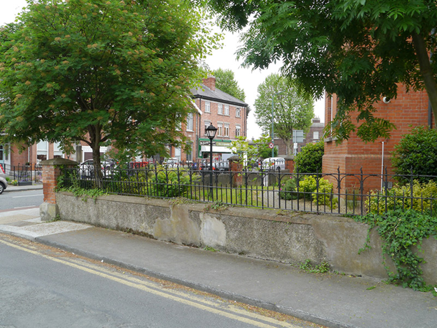Survey Data
Reg No
50130068
Rating
Regional
Categories of Special Interest
Architectural, Artistic
Original Use
House
In Use As
Apartment/flat (converted)
Date
1880 - 1900
Coordinates
315269, 236979
Date Recorded
05/06/2018
Date Updated
--/--/--
Description
Semi-detached five-bay two-storey L-plan former house, built c. 1890, having two-bay gabled projection with bay window, single-storey porch to central bay beneath balustraded balcony, and angled room projecting from northeast corner; two-storey flat-roofed return to rear. Now converted to apartments. Pitched slate roofs with terracotta ridge crestings, red brick chimneystacks having plinth and corniced caps, and replacement uPVC rainwater goods and ogee profile gutters. Red brick walling laid in Flemish bond on plinth course with cement-rendered base, moulded brick stringcourse and cornice, oculus with archivolt and keystones to gable, and with painted masonry balusters and concrete coping to balcony. Square-headed window openings with plain reveals, granite sills and replacement uPVC windows. Elliptical-headed porch opening having gauged brick keystone, moulded imposts and archivolt; fielded painted four-panel timber door with transom light and glazed side panel opening onto tiled porch reached by eight granite steps from street level flanked by brick plinth walls. Small front garden enclosed by decorative wrought-iron gate and railings on concrete plinth wall with brick piers having concrete copings; brick wall with iron gate accessing rear of house.
Appraisal
A well-proportioned house prominently located near the junction of Botanic Road and St. Mobhi Road, forming one of a pair of similarly-styled semi-detached houses with attractive moulded brick details, prominent chimneystacks and pedimented street-front gables. Built as a domestic residence of some quality, it is now divided for use as apartments but its exterior is largely unchanged except for replacement windows. It is an early example of semi-detached residential building in the area and is representative of the suburban development of Glasnevin in the late nineteenth century. Its red brick walling sets it very much in character with the surrounding architectural grain, but it is distinguished from the plainer neighbouring buildings by its ornamental moulded brickwork which exhibits good craftsmanship and lends a sense of classical order.







